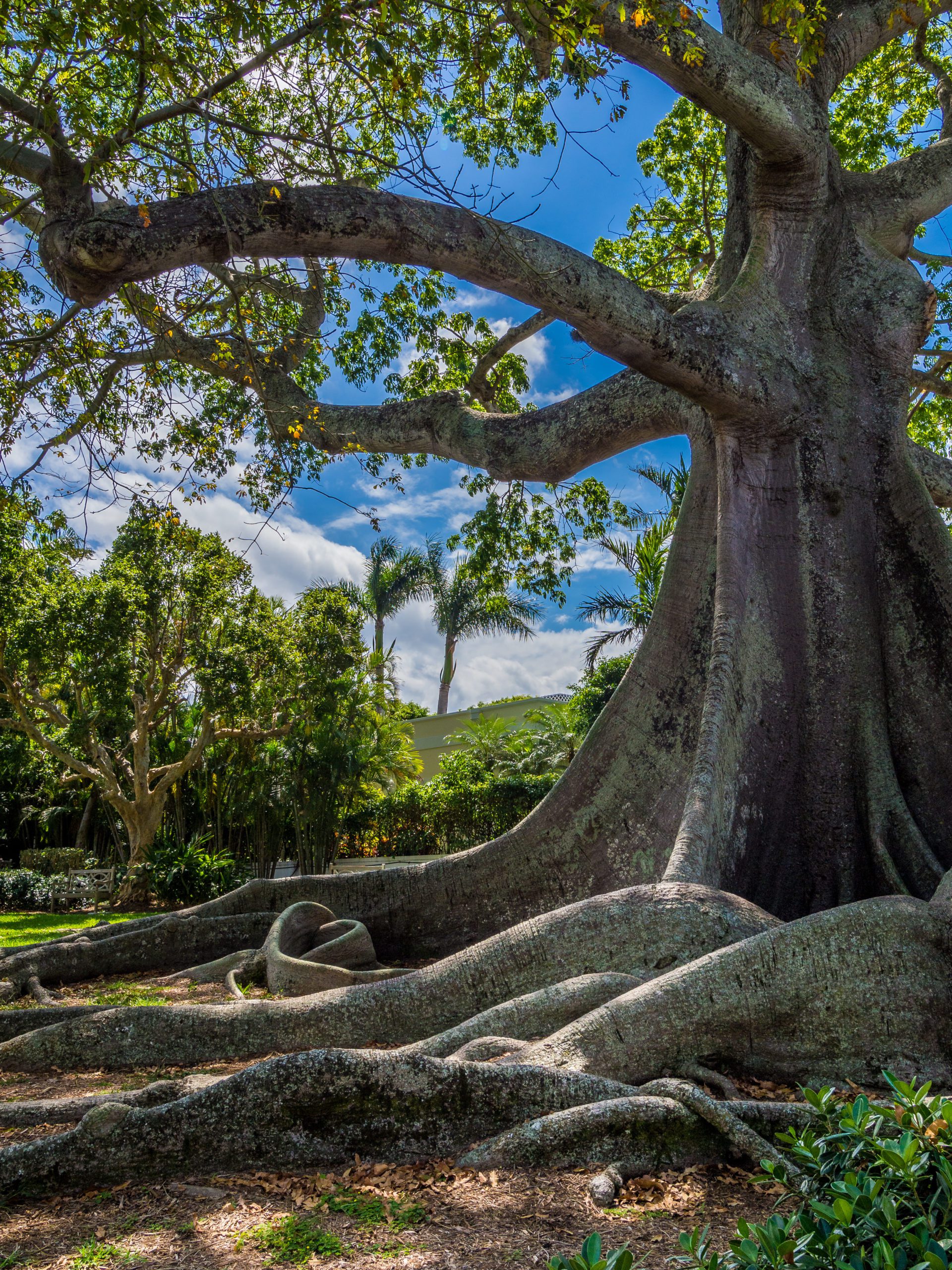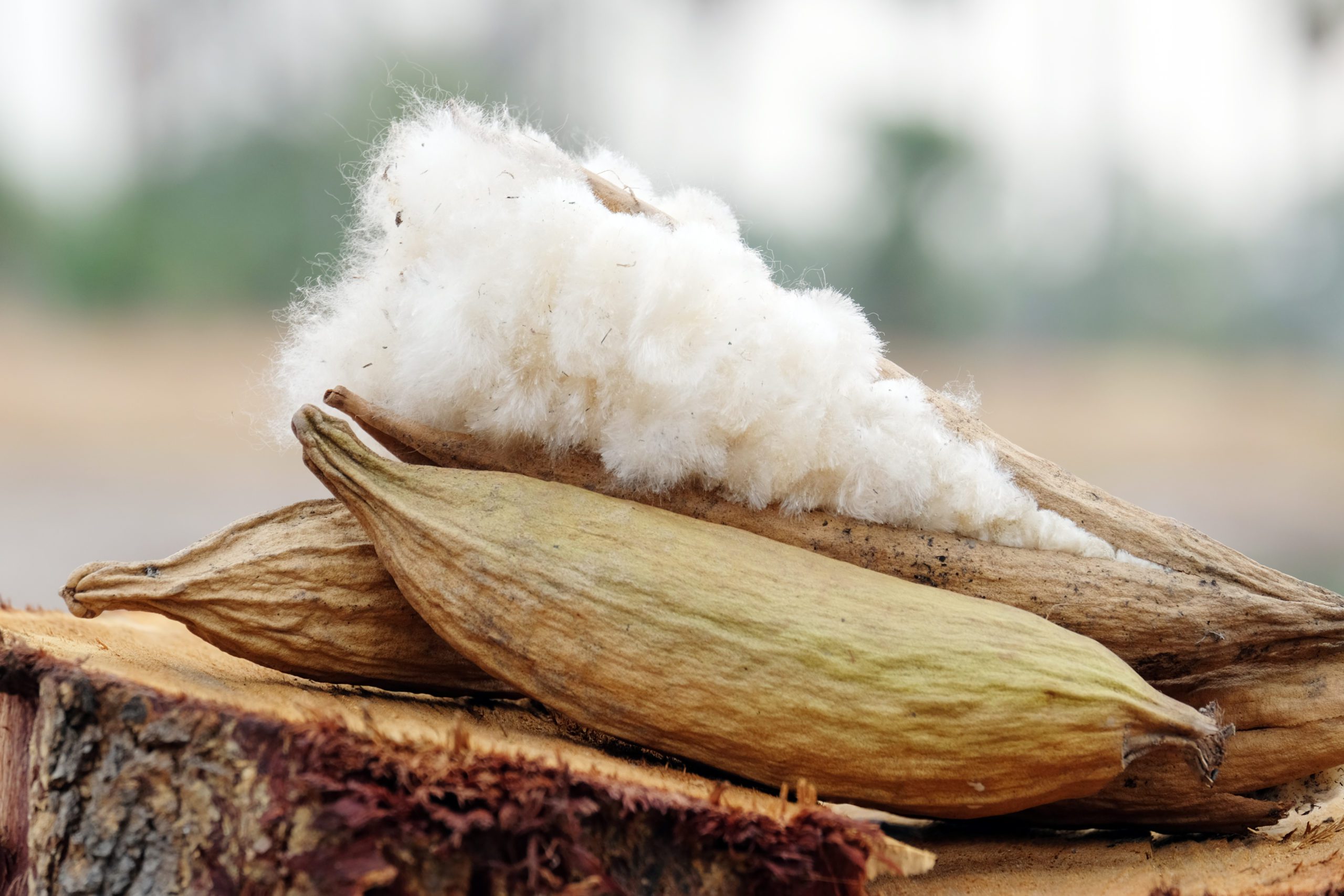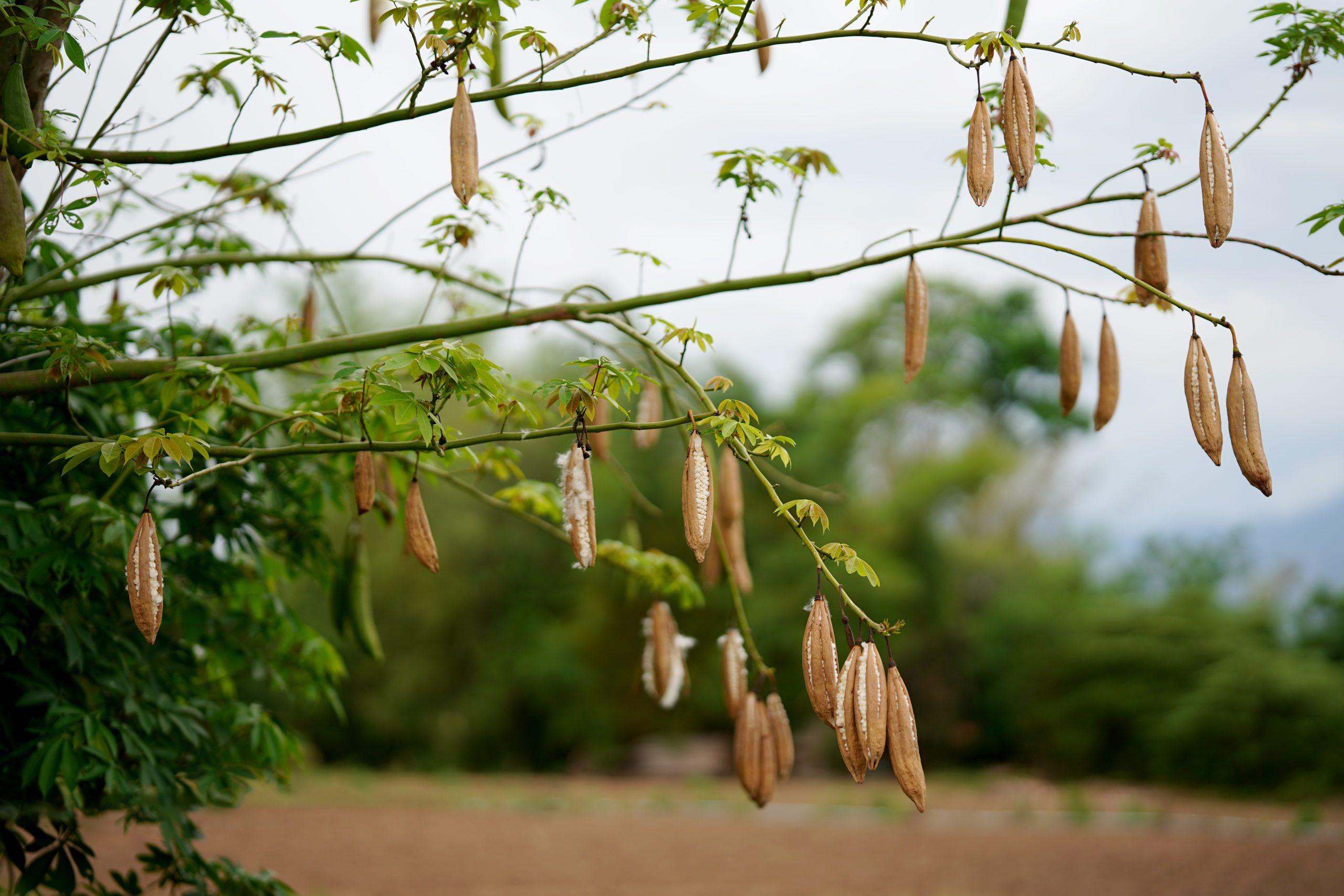Kapok is an innovative natural fibre found in the fruit of the kapok tree. Learn about the incredible sustainability benefits kapok has to offer and how it can be incorporated into your fall wardrobe.
The Kapok Tree
Kapok is a tropical tree that grows across the world’s rainforests from southern Mexico to the southern Amazon and across parts of west Africa and Asia. This tree towers up to 50 meters (164 ft) and can grow up to 4 meters (13 ft) in height every year.

They have an average lifespan of about 60 years but often survive up to 300 years in the wild — with the oldest tree recorded at 800 years old. The kapok tree is drought-deciduous, meaning it sheds its leaves after the rainy season and then flowers during the dry season when it’s leafless. When in bloom, trees can produce up to 4,000 fruits.
The Fibre
Kapok fibres are found in fluff-filled seed pods that grow inside the fruit of the trees. These seeds can be harvested without any harm to the tree by either removing the fruits from tree branches or using already fallen fruits.

Cultural Importance
The Mayans, Aztecs, and a few other pre-Columbian cultures consider the kapok tree to be sacred. These cultures see it as a symbol of the universe and a link between the three levels of life – heaven, the earth, and the world. In the past, these trees have been used to make clothing and carvings, for medicines and as a food source for many peoples in the central Americas.
Kapok and Their Ecosystem
Kapok trees have a ton of positive environmental impacts on their local ecosystems and the environment at large – here are a few notable ones.
1. Shelter & Food Source
Kapok trees provide homes for many species of insects, birds, amphibians and monkeys. They provide habitats for animals who are dependent on sunlight and bask in the high canopies of the trees and animals that require shade from the tropical sun. The trees also act as a great food source for bats, birds, bees and invertebrates as their flowers have high nectar contents perfect for these animals to snack on.
2. Carbon Sequestration
The kapok tree has an incredible capacity for carbon storage and sequestration. A single tree absorbs roughly 5.09/kg of carbon for every kilo of fibre produced.

3. Soil, Air and Water Health
These trees also play a large role in flood and landslide prevention by reducing soil erosion and improving soil quality. The tree benefits air quality by removing pollutants, reducing local air temperatures and outputting oxygen. They also improve water quality and help protect local watersheds.
4. Renewable Resource
The kapok tree does not require any human intervention to grow successfully. It can grow healthily without any chemicals, fertilizers or pesticides. It’s also very adaptable and can grow in dry conditions and poor-quality soils.
Sustainable Fibres
Kapok is a silky soft-to-touch material that is great for insulation and thermoregulation (aka perfect for fall). It’s breathable, lightweight (8 times lighter than cotton), hypoallergenic and super resilient.

Men’s Kapok Colville Shirt
To create clothing material, kapok fibres are blended with cotton, which saves a TON of water during the production of the garment. For example, producing 4 t-shirts with a kapok-cotton blend can save 3000 litres of water. In general, kapok needs very little processing and is a great option for sustainable clothing, which is why we’re excited to add it to our family of fabrics.
Check out our new collection this fall to find sustainable clothing that is great for the planet and soft on your skin.
Keep Reading
By planting ten trees for every item you purchase, it’s our mission to plant 1 billion trees by 2030. Head to our website to learn more and get 10% off your next purchase.

